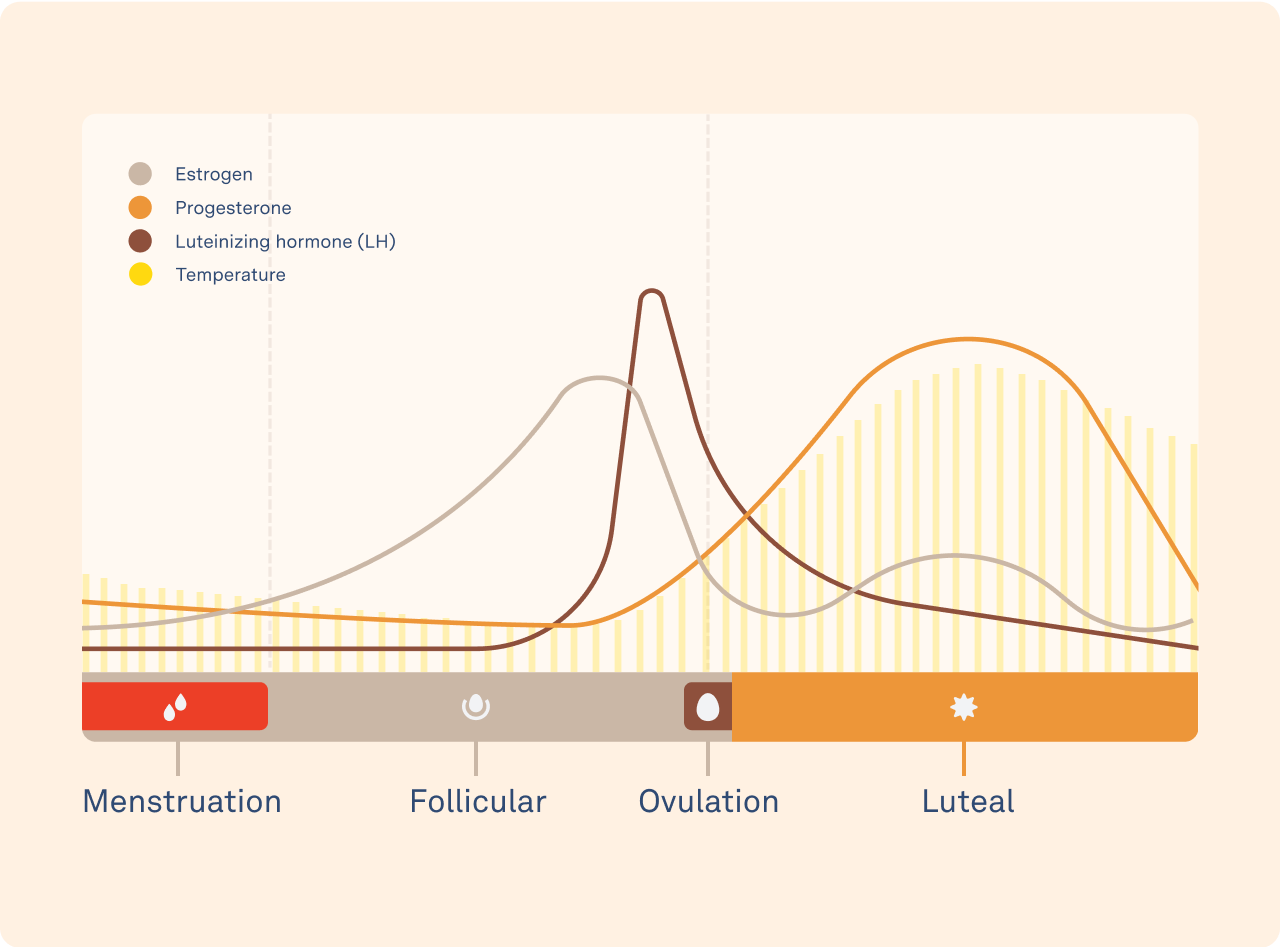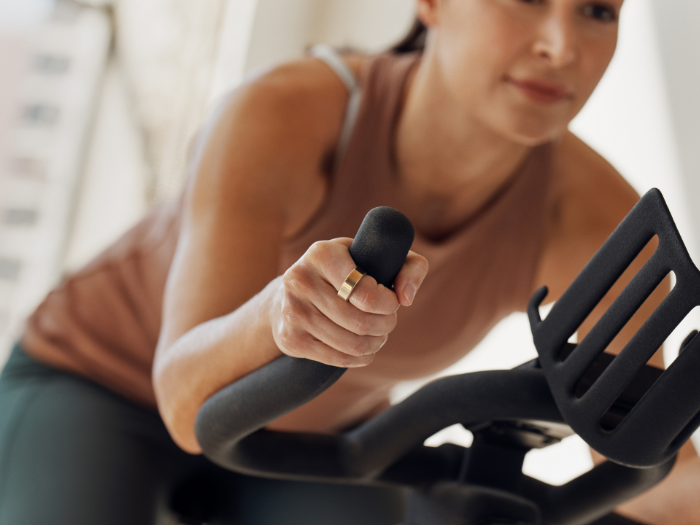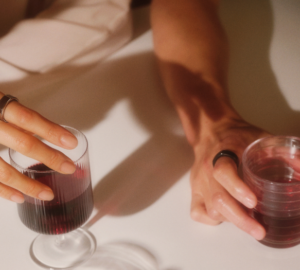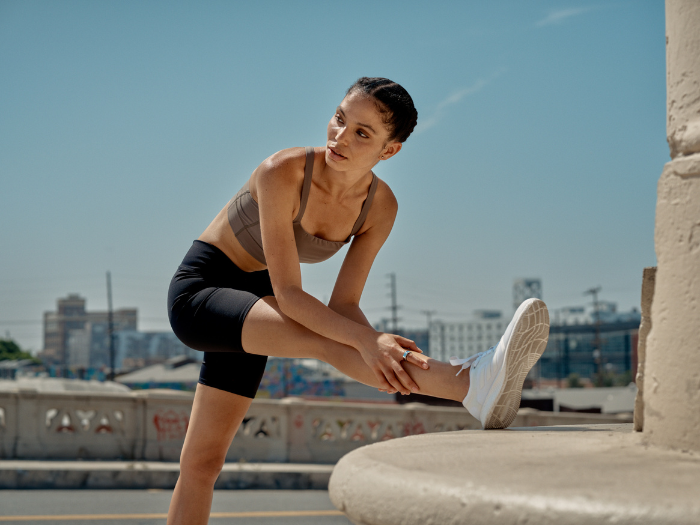- The hormonal fluctuations that happen for people who menstruate can affect energy levels and mood.
- If you are someone who is affected by hormonal changes, you may want to experiment with adjusting your workout routine.
- According to preliminary research, the follicular phase is an optimal time for higher-intensity exercise, whereas the luteal and menstrual phases may be a good time to scale back and opt for lighter-intensity exercise.
Throughout the course of a month, people with menstrual cycles can experience a natural flux in their energy levels, mood, and motivation. These natural fluctuations can affect your athletic performance — as well as your enthusiasm to work out at all. Fortunately, armed with a bit of knowledge and a tool like Oura Ring, it’s possible to learn how to align your training with your menstrual cycle.
Oura members can access biometric data that can inform daily habits and routines, which can help you adjust your workouts in line with your body’s changing needs. Specifically, with the Cycle Insights feature in the Oura App, you’ll be able to accurately predict your period and know where you are in your cycle.
This personalized information gives you insights into what your body’s going through during the month, so you can use the information to better align your workouts with your body’s needs — and wants.
What Are the Phases of Your Cycle?
There are two main phases of the menstrual cycle:
- Your follicular phase (which includes menstruation and ovulation): day one to 14. This phase starts with your period.
- Your luteal phase: day 15 to 28. This phase starts after ovulation.
The exact duration of each phase differs from person to person. In fact, the idea that a menstrual cycle is 28 days long has been shown to be a misconception, as evidenced here through Oura data.
READ MORE: Busting the 14-Day Ovulation Myth
Meet the Hormones of the Menstrual Cycle
There are three main hormones involved in the menstrual cycle: progesterone, estrogen, and luteinizing hormone (LH). The levels of these hormones fluctuate throughout the menstrual cycle, dependent on which phase of the cycle you’re in.
During the follicular phase, levels of estrogen, progesterone, and LH start low and steadily increase up until ovulation. The surge of LH is what triggers ovulation.
Your luteal phase begins after ovulation. Midway through the luteal phase, progesterone and estrogen spike. The high levels of progesterone thicken the lining of the uterus and prevent contractions.
Eventually, progesterone and estrogen start to decline, breaking down the top layers of the uterine lining, and are shed in the form of menstrual bleeding to start a new cycle.
When your period arrives, the levels of progesterone and estrogen are at their lowest.
READ MORE: How Your Menstrual Cycle Impacts Your Entire Body

Hormonal Fluctuations and Behavior Change
Hormones are your body’s chemical messengers that influence every function in the body, from your metabolism to fertility to the quality of your sleep. They have the power to alter your mood, behavior, and energy levels, particularly when they are rapidly changing.
That’s why at certain points in your menstrual cycle, you might notice a shift in how you feel and perform. It’s completely normal! These mood and behavior changes affect as many as 90 percent of people with menstrual cycles and is referred to as “PMS.”
PMS stands for premenstrual syndrome, a group of symptoms including fatigue, food cravings, mood changes, breast tenderness, fluid retention, and bloating. It happens, in part, because of the changing levels of hormones.
The low levels of progesterone and estrogen when your period starts can make you feel tired and lethargic, impacting your strength and motivation to exercise.
There are a few reasons why this happens. First, estrogen is an anabolic hormone. Anabolic hormones are the “building” hormones: they increase strength and motivation, aid recovery after a workout, and increase your metabolic rate.
In 2016, Umeå University conducted a study with 59 women to see how their hormones affected their exercise capacity. The researchers found the participants experienced greater strength and power when their estrogen levels were the highest — around the time of ovulation.
Estrogen levels also influence neurotransmitter production. When estrogen levels are low, it impairs the production of certain “happy hormones” like serotonin and dopamine. That’s why you might experience a low mood when estrogen levels drop — during your period and after ovulation.
Progesterone reduces your motor cortex function and promotes catabolism (the breaking down of tissue). When progesterone is at its highest, you might have a slower reaction time, lower levels of muscle recruitment, and diminishing rates of muscle protein synthesis post-workout. It also stimulates the appetite — the reason many people report feeling insatiably hungry just before their period!
RELATED: Researchers Use Oura to Study Changes Driven By The Menstrual Cycle
Cycle Syncing: A Caveat
Of course, there are many factors that can affect your exercise performance or motivation beyond your hormones — for instance, sleep, stress levels, and current fitness levels. That’s why cycle syncing may not be beneficial for all individuals with menstrual cycles.
“Syncing your workouts to your cycle is highly personal,” says Dr. Christine Noa Sterling, MD, board-certified OB-GYN and Oura medical advisor. “What feels good and is right for one person during a particular phase of their cycle isn’t necessarily right for another. If it works for you, fantastic! But it’s not necessary.”
Plus, research is still ongoing and emerging. Despite some interesting preliminary findings, it’s difficult to draw objective conclusions on cycle syncing your workouts, due to the sheer number of confounding variables.
A meta-analysis published in Sports Medicine in 2020 used 51 studies to examine whether a menstrual cycle phase affected exercise performance. The analysis indicated a “trivial reduction” in exercise performance during menstruation and contrary to other studies, no significant changes during the luteal phase (which is when PMS typically hits). Nonetheless, the researchers conclude that a “personalized approach must be taken based on each individual’s response to exercise.”
Ultimately, aligning your training with your menstrual cycle may help you, particularly if you experience PMS or PMDD and want to try and manage your symptoms. However, if you feel relatively stable throughout the cycle, there’s no scientific reason as to why you should scale back on your workouts. Listening to the cues of your body is a better directive.
How to Align Your Training With Your Menstrual Cycle

Follicular Phase, Including Ovulation
At the start of the follicular phase, your hormones are at their low point. You may feel relaxed and potentially lethargic. However, by day five or six (roughly) your estrogen levels begin rising, and you should enjoy a burst of energy, making it a great time to do higher-intensity workouts.
A study published in 2014 conducted a trial with 20 women to investigate the effects of follicular phase-based strength training on muscle strength compared to luteal phase-based training. The researchers found that during the follicular phase, the women experienced a higher gain in muscle strength and size.
This led them to conclude that the follicular phase (including the ovulatory phase) is the optimal time in the menstrual cycle to focus on higher-intensity strength training, such as:
- High-intensity interval training (HIIT)
- Strength training (if you’re thinking about increasing the reps or weight, now’s a good time to do it!)
- Circuit training
Around ovulation, roughly the middle point of your cycle, is a good time to start increasing the load and intensity of your workouts. This is the prime time to put the work in!
Luteal Phase
After ovulation and leading up to menstruation, your estrogen levels will be low. You might experience a reduction in energy levels and motivation. The high levels of progesterone might also leave you feeling hungry, with low endurance. This is usually when PMS hits! You may experience less desire to exercise, and your body might may be signaling to you to slow down and take it easy.
Your basal body temperature, resting heart rate, and breathing rate rise during the luteal phase as a result of increased progesterone. Your Oura Ring will be tracking these metrics, as well as temperature changes throughout your cycle, to predict what phase your body is in and when to expect your period.
Due to higher cardiovascular strain during the luteal period, it’s an excellent time for lower-intensity workouts, such as:
- Low-to-moderate-intensity cardio
- Yoga
- Pilates
- Stretching
- Avoid heated classes, as they can put a strain on your already elevated body temperature.
Menstrual Phase
The menstrual phase is when you’ll have your period. The recommended type of exercise really depends on how you’ll feel because you may be experiencing PMS. Some women benefit from exercising during their period as a way to alleviate cramps and a low mood.
A 2013 study had a group of female participants engage in aerobic exercise three times per week during their periods to assess the severity of PMS. The researchers found that light to moderate aerobic exercise reduced PMS and the associated symptoms.
Further evidence points to the fact that movement can be greatly beneficial during this phase — here are five ways exercise can help you during your period:
- Exercise can increase feel-good neurotransmitters: When you exercise, feel-good neurotransmitters like endorphins, serotonin, and dopamine are released. This can combat the low levels of these chemicals during periods of low estrogen.
- Exercise can increase blood flow: Experiencing brain fog during your period? Exercise can help. Moving your body increases blood flow to your brain to combat brain fog and leave you with enhanced mental clarity.
- Reduce stress and anxiety: A study found that exercise reduced PMS symptoms physically and psychologically, helping to alleviate stress and anxiety. It’s important to note that the study asked participants to perform aerobic exercise, so doing HIIT may not elicit the same benefits! Gentle movement like aerobic exercise and yoga, have been shown in research to be the most effective in easing PMS symptoms like stress and anxiety.
Listen to Your Body (& the Data!)
Regardless of where you are in your cycle, if you don’t feel like working out, it’s important to listen to the cues of your body. Overexerting yourself can impact your overall readiness for the day and your body’s ability to regulate and recover over time.
Your Oura data can help inform your training decisions. If your sleep has been affected by some painful cramps, for instance, your Sleep Score and Readiness Score may be lower, signaling it’s time to prioritize recovery.
Using Oura’s Cycle Insights can help give you an edge, helping you align your training, nutrition, and sleep with your body’s needs throughout the menstrual cycle and beyond.










